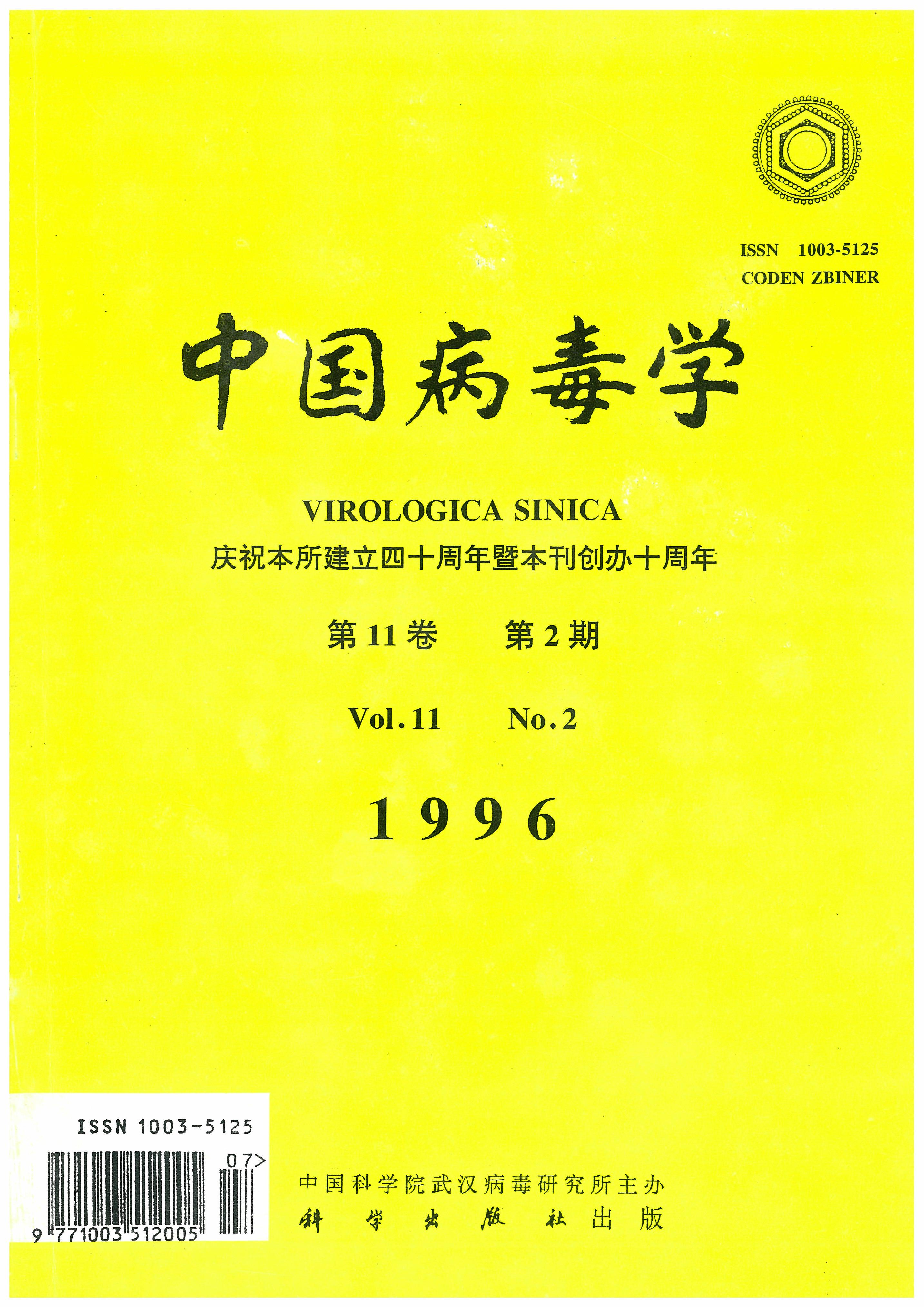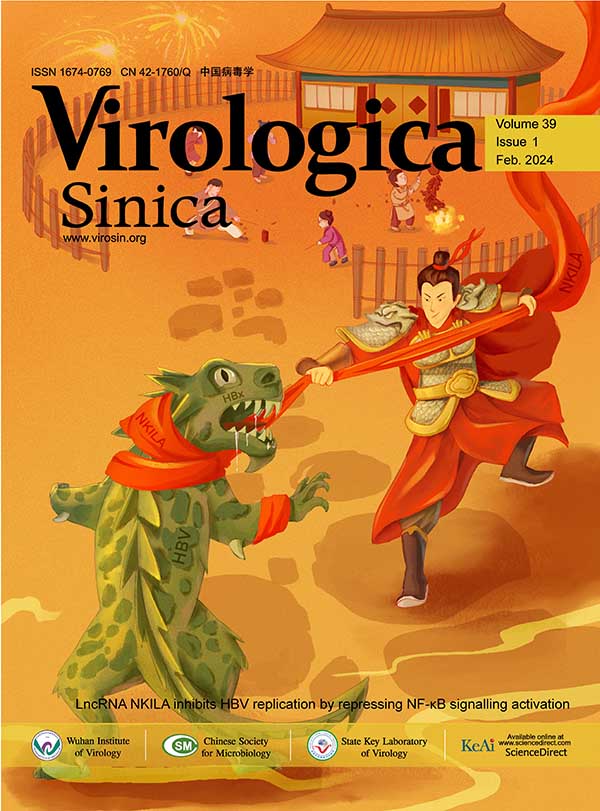This study reports a simple,rapid and special diagnosis method of carbon agglutination test(CAT)to detect Respiratory Syncytial Virus(RSV).Sixteen specimens of RSV were seen agglu-tination but 8 specimens of other virus were negative.We compared CAT with tissus culture byusing nasopnaryngeal secretions from children with suspected RSV iofection.Of 83 specimens,53(69.88%)were positive by CAT,33(39.75%)were positive by virus culture,There were verysignificant difference in the positive rates beween CAT and culture Blocking test showed thatCAT has high specificity.We believe that CAT has a high sensitivity and specificity and it can beused for the rapid detection of clinical specimens of RSV.
Mostly employing recombinant antigen,indirect enzyme linked immunosorbent assay is usedto detect HEV infection.Since synthetic peptides can be synthetised easily and have less nonspe-cific structures,they have been extensively used in the laboratory diagnosis of viral diseases.Basedon the reported nucleotide sequence of HEV genome and conservatism and hydrophilicity of aminoacid sequence,two synthetic peptides from ORF2 and ORF3 were prepared and used to developean EIA for detecting Anti-HEV,Detected 264 clinical specimens,the coincident rate for positivewas 97.75 % and for negative 99.43%,as comparing with DBL reagent(Singapore).Thismethod has a high sensitivity,specificity safety and speed.It is an ideal method for detection ofHEV infection and survey of HEV epidemiology.
eripheral blood samples from patients with exanthem subitum and lymphoproliferative dis-orders were collected.Mononuclear cells were separated from patients blood and were cultured invitro.As a result,virus strains were isolated from the peripheral blood mononuclaear cells of sevenpatients with exanthem subitum and two patients with lymphoproliferative disorders.The isolatescould propagate in the PHA stimulated umbillical cord blood mononucalear cells and the cytopathiceffects characterized by large ballonlike cells were observed after infection Electronmicroscopy ofinfected cells ultrathin section showed the size of enveloped virus particles is 180 nm in diameterand the particles morphologically resemble herpesgroup virus.Serological test further demonstrated that the isolates lacked immunological cross-reactivity with HSV-1 and 2. HCMV and EBV,butwere shown to be antigenically related to HHV-6 GS strain; HHV-6 specific DNAs were detectedin all the isolate by polymerase chain reaction.
The spleen cells isolated from SCID mice transplanted with human tonsillar lymphocytes(Hu- TLC-SCID)immunized with dengue virus 2 type(DV_2)in vitro and in vivo were trans-formed by Epstein-Barr virus(EBV).Specific human anti-DV_2 antibodies were detectable in thesupernatant of the transfomed spleen cells.The presence of human B lymphocyte markers(and SmIgG) as well as EBV antigens (LMP1 and BENA)and LMP1 gene fragment in the trans-formed spleen cells determined by immunoperoxidase staining immunofluorescence technique andPCR technique,indicated that the Hu-TLC-SCID mouse spleen cell has been successfully trans-foimed by EBV.The EBV-transformed Hu-TLC-SCID mouse spleen cell could be utilized forcontinous production of specific human anti-DV_2 antibodies in vitro.
he morphogenetic process of Acr NPV in vivo and cytopathology of its host cells were ob-served and analysed using electron micloscopy techniques after Acr NPV infected larval stagehost.The investigation shows:after innoculation 72~168h,profuse virogennic stroma,nucleocap-sid.envelope,filament,polyhedrirn,virion,viral bundle and complete Acr NPV existed withinmidgut epithelia cells.The cell organs have apparent pathological changes. Endoplasmic reticuiumtakes the form of fingerprint type,and there are a lot of myloid bodies.
Two specific primers were designed and synthesized according to the genomic sequence ofPLRV reported in literature,The first strand of cDNA was synthesized by reverse-transcriptionusing RNA of PLRV Chinese isolate(PLRV-Ch)as a template,followed by PCR amplification.The synthesized cDNA was cloned into plasmid pUC19 in DH5α.The cDNA clone was further i-dentified by PCR,restriction enzymes analysis and nucleotide sequence analysis.Tests show thatthe intergenic region of PLRV-Ch isolate consists of 197 nucleotides,and there is a high homologyin nucleotide sequence in comparision with PLRV Netherland isolate(PLRV-N),PLRV Canadianisolate(PLRV-C),PLRV Austrilian isolate (PLRV-A)and PLRV Scottish (PLRV-S)The rate ofnucleotide sequence homobgy is 99%,98%, 93%and 98%,respectively.
The morphological and biological characters of three CMV isolates infecting banana fromGuangdong were studied.According to the different reactions in six kinds of host plants includingCucumis sativus,Nicotiana tabacum cv,HV38,Lycopersicon esculentum,Cucumis melover.saccharins,and sepecially Musa acuminata,the three isolates could be distinctly distinguished.The diameters of the virus particle of BS,CS and MM were 22.5, 24.3 and 27 nm,and the rela-tive electrophoretic mobilities of their particles were 0.72,0.56 and 0.51,respectively.The MMisolate multiplied and spreaded more rapidly with higher concentrations in Cucurbita pepo andNicotiana tabacum than the BS or the CS isolate,and in turn then BS isolate more rapidly thanthe CS isolate.
Rice stripe virus(RSV)genome is composed of four ssRNA species. The 5'-and 3'-terminal sequences of about 20 bases of each ssRNA were almost completely complementary to each otherand the 5'-terminal sequences of all four ssRNA have the some sequence of 11 nucleotides.Thoseconserved sequences were proposed to be involved in the replication,transcription or assembly ofRNAs into the particle.If those sequences are cleaved the virus would be lack of recognition sitesso that its reproduction will be destroyed.On the other hand,the diseasespecific protein (DSP)is related to the disease severity. Inhibition of its expression may reduce the disease severity.Basedon those considerations and the structure requirements of the hammer-head ribozymes,two ri-bozymes were designed,one was to cleave the conserved region of the 5'-terminal of the viral se-quence of RNA 4 or even all the regions of the 5'-terminals of the eight viral and viral complemen-tary sequences of the virus,and the another to cleave the DSP gene region.
he whole sequence of RDV S1 fragment and partial sequence(S5Ⅲ)of RDV S5 fragmentwere synthesized and amplified by the method of reversed transcription-polymerase chain reaction(RT-PCR).Each amplified product was then cloned into pGEM7Zf(+)or pUC19 at the Smalsite,and sequenced.Based on these results,a hammer-head ribozyme sequence was introduced intoantisense chain of S5Ⅲfragment to construct antisense ribozyme gene S5ⅢR,Rice transformationvector pROK-S1-1' and pROK-S5ⅢRwere constructed by inserting S5ⅢRgene and 5'-end se-quence of S1 fragment(S1-1')into plant expression vector pROK Ⅱ.
everal strains of barley yellow mosaic virus(BaYMV),each distinct from those recognisedin Japan and Europe,have been identified in China based upon the response of foriegn barley cul-tivars.These strains are identical in serological properties and can not be distinguished by ELISA and Western blot;They are also probably high homlogous and can not be distinguished by North-ern blot analysis and reverse transcriptase- polymorase chain reaction(RT-PCR).However,sincetheir pathogenicities are different,they must have some variations at nucleic acid level,Thesevariations can be detected by examining single-strand conformation polymorphisms of RT-PCRproducts,which further confirmed that different strains of the virus are presented in China.
arek's Disease Virus(MDV)glycoprotein D(gD) gene was amplificated from CEF ge-nomic DNA infected with MDV GA strain by polymerase chain reaction(PCR).PCR products ofthe gD gene were labeled with digoxigenin as porbes and they could only detect MDV-CEF ge-nomic DNA,MDV genomic DNA Bam HI-A fragment DNA by dot Not,but not uninfected CEFDNA,PCR products of the gD gene were cloned into pUC 18 plasmid,and recombinant plasmidswere screened by in situ hybridization with the probes of gD PCR products.The recombinantplasmids were also labeled with digoxigenin as probes.Two probes could detect gD PCR products,insert of recombinant plasmids,MDV genomic DNA BamHI-A fragment DNA by cross-hybridiza-tion in Southern blot.Restriction endonucleases analysis was used to identify the restriction sitesof the gD gene and polylinker of recombinant plasmid,and it showed that there were no sites of EcoRI、KpnI、HindⅢ、PstⅠ、Sma Ⅰ and PvuⅡ.It demonstrated that the recombinant plasmidcloned from MDV GA strain was gD clone.
Total RNAs were isolated from Heliothis armigera larvae infected with Heliothis armigeraNuclear Polyhedrosis Virus(HaNPV) late after infection(60 h postinfection),800 μg total RNAswere obtained from 1g larvae by improved granidinium isothiocgarate method.The whole viralDNA was purified from HaNPV polyhedra.The DNA was immobilized on nitrocellulose filtersand used to select viral specific mRNAs from total RNA.The specific mRNAs were translated invitro in the presence of L-(35S)methionine by using a rabbit reticulocyte lysate system and ana-lyzed on sodium dodecyl sulfate-polyacrylamide gel.At least twenty proteins were obtained.Theviral structural proteins were among the translation products which were testified with the experi-ment of ELISA.
The identification of a virus isolate of chinese chive which occurs in Fuxing city of Liaoningwas carried out during 1993~1995.The isolate can be transmitted by mechanical inoculation andaphid(Myzus persicae),but cannot be transmitted by seed and soil.The isolate only infected 8species of plant out of 31 species from 10 families tested.The inder host reaction of the isolate wasidentical with Chinese chive dwarf virus(CCDV),In Chinese chive sap,it properties were thermalinactivation point(TIP)between 65~70℃.dilution end point(DEP) was 10-4.longevity of leafextract at rooth temperature(>25℃)was 5 d.An electron microscopic observation by dip methodrevedls the particle of the virus as rod-shaped with size of 650 × 12~13 nm.According to thecharacteristics of Syinptom, physical properties,host range,index host peaation,transmission andparticle of the virus,we consider this virus,as CCDV. This result is the first report in China.

















